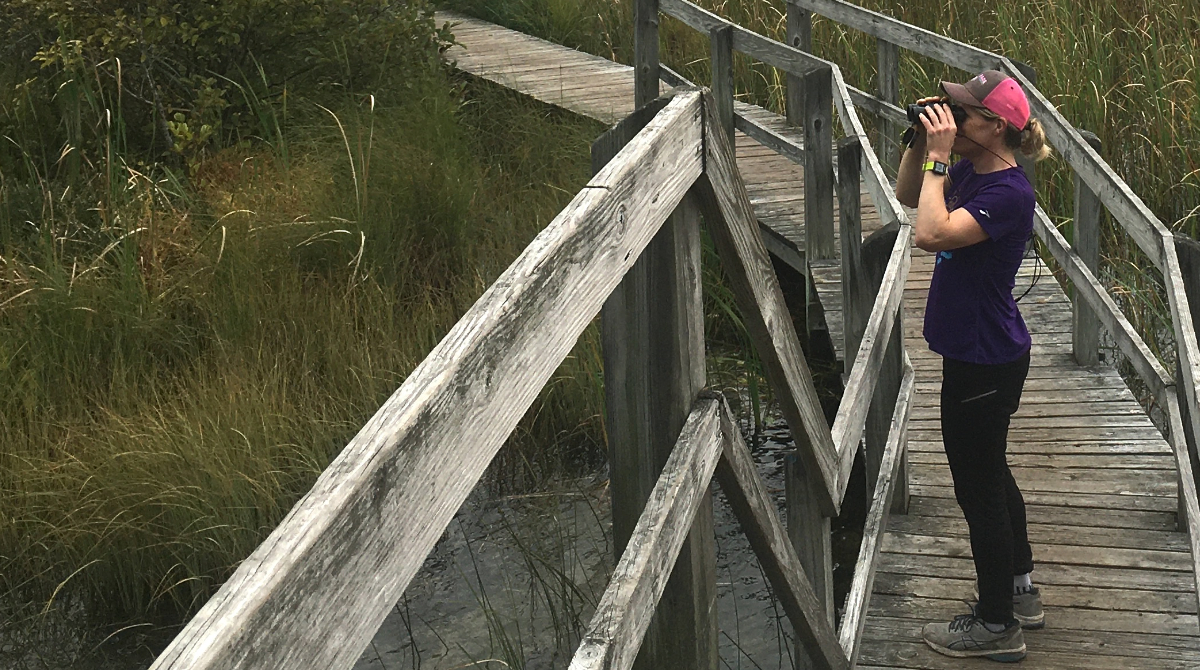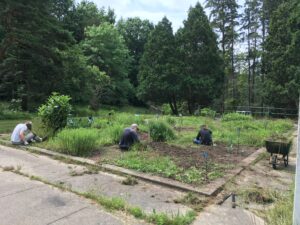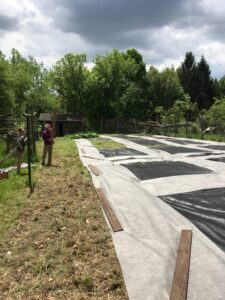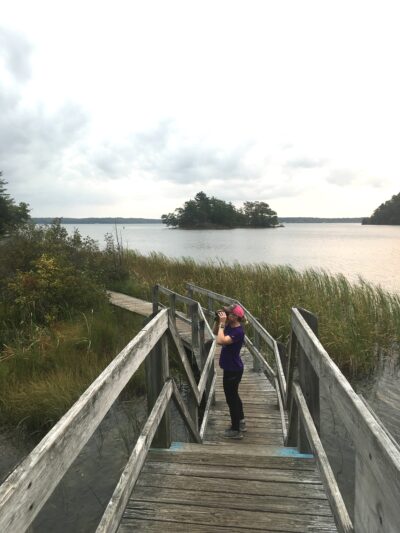Meet Alana Chriest, resident manager of Michigan Audubon’s Capital City Bird Sanctuary (CCBS), located in Delta Township, near Lansing.
Alana began her tenure at CCBS as co-resident manager with Linnea Rowse (who also served as Michigan Audubon’s conservation program coordinator), and she continues serving this role at the sanctuary today. Alana is a doctoral candidate in environment and natural resources at The Ohio State University, conducting research on new and beginning farmers in the U.S. She holds an M.S. in food systems from the University of Vermont, is on the Eastside Lansing Food Co-op’s board, and teaches environmental studies and sociology at Washtenaw Community College and Delta College, respectively. Alana grew up in a small town at the foothills of the Cascade mountains in Washington and has lived in Alaska, Wyoming, New York, Vermont, and Ohio before permanently moving to Lansing in 2018.
Q: Alana, can you tell us what you’ve come to appreciate about this particular bird sanctuary of ours?
A: In regards to habitat, Capital City Bird Sanctuary (CCBS) has a pine grove, mixed forest, riparian habitat along the Grand River, and an excellent meadowland and wetland micro-ecosystem in the middle of the sanctuary. For people, CCBS is unique in that the proximity to higher-density population areas provides the sanctuary with more opportunities for birding, volunteering, and conservation education than more rural and remote sanctuaries. I love that this sanctuary is across the street from Hawk Meadow Park, managed by Delta Township, making the area one big “hub” for conservation that people in the Greater Lansing area can enjoy. Networking with local residents and collaboration with the township makes CCBS a flagship Michigan Audubon sanctuary.
Q: What would you like visitors to Capital City Bird Sanctuary to know?
A: The sanctuary has almost two miles of trails that go through each of the unique areas of the sanctuary. If you want a longer hike, you can head to Hawk Meadow Park across the street, expanding the trail system to over six miles! Please note that no dogs or bikes are allowed at CCBS. The trails are easy, with a few boardwalks to help cross wet areas making the trail very family friendly. CCBS has a small mowed area near the gardens with a picnic table for lovely warm-weather picnics to make an outing of your visit. There are numbered bluebird nest boxes from which we track and collect yearly data, as well as a few Wood Duck boxes. You can take notice of the farmstead relic as the standing yet defunct windmill on the east side of the field reminds us that habitat restoration is not only possible but also successful when communities and organizations come together to improve environmental quality. Projects for 2022 include planting the community garden, removing invasive species, and petitioning Eaton County to install a crosswalk on Delta River Drive between Hawk Meadow’s parking area and CCBS. Additional parking is available at the cemetery bordering the west side of CCBS, where visitors can use the trail entrance that goes through the pine grove.
Q: When is the best time to visit CCBS?
A: I love spring as the best time to visit CCBS. May and June are when I have been able to spot migrating birds, nesting bluebirds, and a mating pair of Sandhill Cranes that have returned for two years in a row. I also like the sanctuary in winter when there are Brown Creepers, Red-bellied Woodpeckers, Red-breasted Nuthatches, and about a dozen other resident birds in plain view. I am not an expert birder, so walking CCBS in late autumn and winter boosts my confidence in bird identification as the sanctuary is always teeming with our winter resident birds. In winter, I have also spotted waterfowl along the Grand River section of the trails. The sanctuary is especially pretty after a good snowfall when I get my snowshoes and take a cold, peaceful walk.
Q: Can you tell us about the community garden at CCBS? What do you know about how it came to be and what you’ve been building there over the past two years?
A: When Linnea and I became resident managers in the summer of 2019, the community garden was neglected. We decided to revive it! Not knowing what the soil health and water sources were like, we prepped for a pilot program community garden. Initially, we had five households (including our own) gardening in the spring of 2020. I planted about half the plot with an experimental “three sisters” approach using sweet corn, squash, and beans, but the raccoons started pulling the corn stalks down, thus exposing the beans to too much sunlight and highlighting the squash plants that the woodchucks then consumed. Other gardeners had similar troubles, and the season ended with just two households pulling a meager harvest come autumn of 2019. In addition to critters, the lack of a reliable water source and garden infrastructure led us to dedicate 2021 as a rebuilding year. Over the winter and early spring months of 2022, we will be installing a high-capacity rainwater collection system, matted and mulched pathways to suppress weeds, and framed plots for micro-fencing, so the woodchucks and raccoons are less likely to destroy the crops. We also hope to set up a farmstand to sell produce across from the park where Michigan Audubon can promote events, activities, campaigns, and the organization’s overall mission.
Q: Is there anything else you’d like to share or promote about your work, experience, perspective, or what you bring to the community in your role?
A: What I bring to CCBS is an interdisciplinary agroecological approach to maximizing both wildlife and human benefits. My decades of experience and studies in environmentalism and food systems have led me to firmly believe the nexus of conservation lies in simultaneously preserving habitat that currently exists while restoring damaged habitat to provide sound ecology and ecosystem services to the common good. I take a philosophical approach and sociological framework to build systems, both self-sustaining and human-managed. When these systems achieve maximum benefits for both humans and birds, we can avoid the false dichotomy of development vs. preservation. By showing people that CCBS can provide excellent habitat, produce food, and provide recreation, we avoid confrontational dialects that divide perspectives. When benefits are shown for the greater good of all life, it can inspire others, especially landowners, to consider turning their land into wildlife sanctuaries with a focus on bird species.
Capital City Bird Sanctuary is located on the banks of the Grand River and across Delta River Drive from Hawk Meadow Park (6160 Delta River Dr., Lansing, MI 48906), which was also donated by Michigan Audubon benefactor Carl Haussman. The 1.8 miles of trails may be enjoyed daily from dawn to dusk.
This article appeared in the 2022 Winter Jack Pine Warbler.




